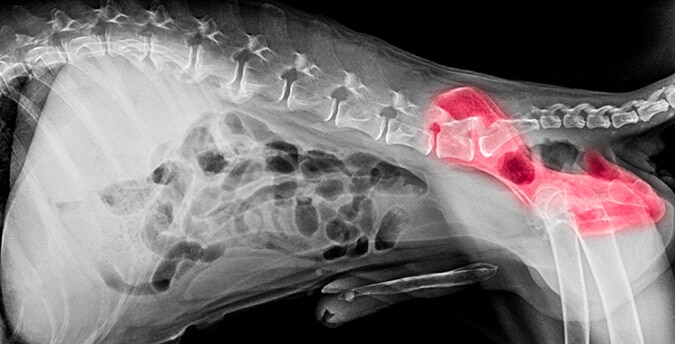Signs and Symptoms of Dog Hip Dysplasia

Your dog brings happiness to your life. It’s entertaining to play throw and fetch with your pooch and watch as they chase after the ball or rope in joy.
Unfortunately, large and giant breeds are predisposed to developing structural issues with their joints as they age. Mention the words, “hip dysplasia,” to any dog owner and they recoil in horror at the thought of their furry friend losing its mobility.
Unless you own a small and light breed, it’s relatively common for most dogs to develop dysplasia in their senior years. Fortunately, there are items like dog wheelchairs that assist your dog in staying mobile into their later life stage.
If you own a large dog that’s reaching its senior stage, it’s a good idea to start checking them for signs and symptoms of dysplasia.
WHAT IS HIP DYSPLASIA AND HOW DOES IT AFFECT YOUR DOG?
This skeletal condition is common in medium, large, and giant breeds. The hip joint fails to develop, and movements slowly erode the cartilage, exposing the bare ball and socket. This effect results in displacement under stresses such as walking, running, or jumping.
Eventually, the joint becomes so worn that your dog loses most of their mobility, and a trip to the end of the yard becomes too painful for them to bear.
THE CAUSES OF HIP DYSPLASIA IN DOGS
Several factors determine the onset of hip dysplasia in dogs. Genetics play a significant role in developing the condition. If your dog’s parents experienced hip dysplasia in their senior years, the chances are that your dog will inherit dysplasia as well.
Skeletal problems occur due to inbreeding or over-breeding a dog. The lack of good quality genetics makes dogs from inferior breeding stock more likely of forming early onset hip dysplasia. In this scenario, it’s common for young dogs to develop the condition as their joints never fully developed as they were growing up.
Your dog’s nutrition plays a significant role in preventing the onset of hip dysplasia. Feed your dog a specialist formula that contains high amounts of the minerals chondroitin and glucosamine. These two minerals assist your dog in building strong bones and teeth, preventing hip dysplasia.
Obesity is another contributing factor to the development of hip dysplasia in dogs. Over-feeding your dog adds weight to their frame. Over time, the joints come under pressure and begin to wear away the cartilage in the hip joints. Try to feed your dog lean, nutritious food that will keep him or her from becoming obese.
Small breeds very seldom experience any signs of hip dysplasia, but it can happen. Typically, their frame is so light that their joints never experience excessive pressure that’s needed to start the onset of the condition.
HIP DYSPLASIA SYMPTOMS IN DOGS
It’s relatively uncommon for young dogs from good breeding stock to develop signs of dysplasia before they reach eight years old. However, those dogs from inferior breeding stock may show signs of the condition in as little as two years after birth.
Symptoms vary from breed to breed and exacerbate as the conditions worsen. Typical signs to watch out for are:
- Less enthusiasm to walk around
- Mobility and activity become diminished
- Reduced range of motion in the hind legs
- Reluctance to climb stairs or balance on their hind legs
- The hind legs experience lameness
- Struggling to get up after lying down
- Swaying gait in the hips
- Loss of muscle mass in the hind legs
- Noticeable pain when touching the rear of your dog
TREATMENT FOR HIP DYSPLASIA IN DOGS
After your vet diagnoses hip dysplasia, they’ll recommend treatment to slow the progression of the disorder. Treatment options may include changes to diet and the addition of dog supplements with added calcium, chondroitin, and glucosamine.
Some severe cases may require surgery to replace the joint. However, this invasive action may not be a good option due to its high cost and unreliable results.
Hip dysplasia is a chronic condition that won’t go away. The best a dog owner can do is help their furry friend live a comfortable life. Buy them a wheelchair or support harness for walks and keep them as active as you can to improve their health and slow the progression of the dysplasia.
